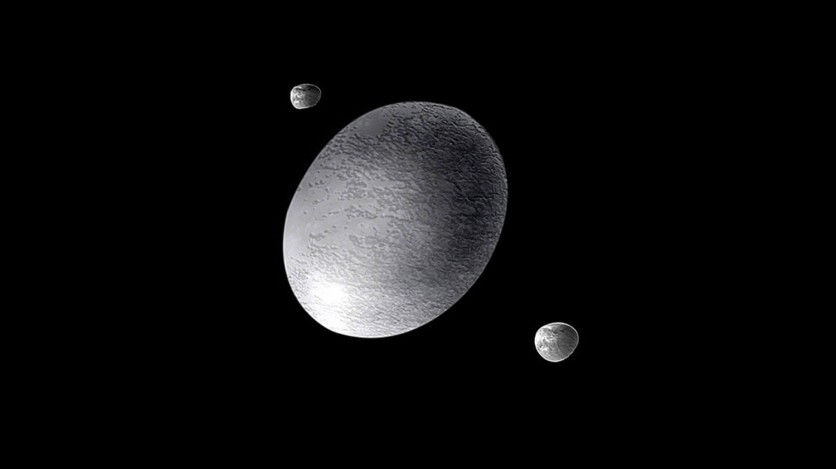Scientists from NASA have uncovered the mysterious history of one of the solar system's weirdest objects: the fast-spinning dwarf Haumea.
Haumea is located in the Kuiper Belt of frozen planets beyond the orbit of the outermost planet Neptune. NASA said that it is almost as big as Pluto and rotates on its axis in just four hours, faster than anything else of its size.

But what is even more fascinating is that Haumea is not formed like a sphere but like a deflated American football due to its rapid spin.
Its surface, which is mostly made of water ice, is unlike any other surface in the Kuiper Belt, except a dozen "siblings" that have orbits comparable to Haumea and seem to be connected to it. They are considered a "family" of objects in the Kuiper Belt.
But how did Haumea and its family come to be? This question was the motivating factor of NASA's scientists to dig deeper into this weird planet.
Disassembling Haumea
In order to comprehend the chemical and physical processes that produced Haumea, Jessica Noviello, a scientist at NASA's Goddard Space Flight Center, and her colleagues turned to computer models that, in theory, could disassemble Haumea and reconstruct it from its beginnings.
Since Haumea has not yet been visited by a space mission and is too far away to be precisely measured by an Earth-based telescope, information is limited.
As a result, to fill in the gaps in their understanding of Haumea, researchers employed computer models to generate predictions.
The only three pieces of data that the researchers initially entered into their models were Haumea's estimated size and mass as well as its brief four-hour "day."
The models produced a more accurate forecast of Haumea's size, general density, and other characteristics. Noviello used mathematical formulas to determine the volume of the dwarf planet and the amount of ice it contains.
She also computed the distribution of Haumea's mass and how that impacts its rotation. Using this knowledge, she tried to predict which characteristics of a newborn Haumea would develop into the mature dwarf planet it is today by simulating billions of years of evolution.
How The Haumean Family Came to Be
The modeling suggests that Haumea hit another object as the planets were first formed and everything was whirling around the solar system.
Although pieces would have been knocked off by this hit, Noviello and her team propose that those bits are not the Haumean family as it is known to us now.
Instead, the Haumean family we see today evolved later, as the dwarf planet's structure began to take shape: lighter-density ice was rising to the surface, while dense, rocky material was settling to the planet's center.
"When you concentrate all the mass towards the axis, it decreases the moment of inertia, so Haumea ended up spinning even faster than it does today," Steve Desch, professor of astrophysics at Arizona State University in Tempe, explained in a press release statement.
This would produce rotating velocities quick enough to fling off surface ice that later developed into the Haumean family.
The radioactivity from the Haumea rocks melting the surface ice would have further increased this inertia, lowering the dwarf planet's rate of spin. The dwarf planet's center was saturated with water, which caused the rocky material there to swell into a huge but less dense clay core.
This article is owned by Tech Times
Written by Jace Dela Cruz
ⓒ 2025 TECHTIMES.com All rights reserved. Do not reproduce without permission.




